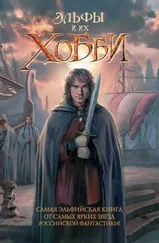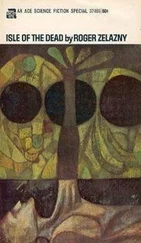It had been very neat.
He had always thought of himself as a non-violent man, so it had been difficult for him to come to terms with what he had to do. But he wanted everything to be perfect – he wanted the homage to be exact – so the murders had been copied in every detail. And what he didn’t know in fact, he followed in instinct; imagining what Vespucci would do.
After the first killing he found the flaying stimulating, almost as though he had two victims, not one. Of course the corpse was blood-red when he had taken the skin away, but the hide was soft, supple. It rested in his hands, and after he had washed it, it took on a chamois leather, butter-soft quality. Sometimes he even draped it over his bare arms, feeling the dead skin resting on his own.
Sipping a mug of coffee, he relished his memories. He had first come across Angelico Vespucci at school. One of those chance findings in the library where he used to hide out to miss Games. Of course he had had to keep his studious side a secret – girls never went for nerds and his peers only admired the tough boys. It wouldn’t do for him, considered very cool, to be revealed as an intellectual.
So instead he studied in secret and polished his glossy outer image until he became more and more removed from his lower middle-class upbringing. His parents might be proud of his brain, but that wasn’t what interested him; he wanted to feel something. Feeling had always been difficult. Over the years he had observed his mother crying when the dog was put to sleep, and his father overcome with affection at Christmas, happy with booze and sentimentality. He had watched them with curiosity. What was all this feeling everyone talked about? It was in films, books, computer games – feelings, feelings, always fucking feelings. But not for him. He didn’t feel anything.
But while he didn’t feel, he could mimic. He could replicate any emotion. As a copyist, he was second to none. And no one ever guessed. He left his childhood and slid into his teens without emotion. He attracted a girl and had sex with her, without emotion. He tried cutting himself with a knife, and felt nothing. Nothing he experienced, read or saw touched that hidden nub of feeling. If it was there at all.
But it was there. It was just a question of stimulating it. Of finding some trigger which would detonate him into life … His attention moved back to the girl’s photographs, then he entered the Vespucci website he had created. His gaze fed off the image of the Italian, the tips of his fingers resting longingly against the screen, tracing the bulbous eyes.
It was easy to remember when he had first heard of The Skin Hunter. The name had jolted him, given him a shift in the stomach, something he had never experienced before. The image, and the legend of a long-dead man, had evoked a feeling . A reaction so intense it had been almost sexual. A stripping away of all the dullness, until a waxen world seemed suddenly stained glass.
At last he was responding, and everything he read about Angelico Vespucci spiked his emotions. He revelled in the Italian’s murders and the details of the skinning, taking Vespucci’s feelings as his own. Somehow a dead killer had managed to skip the centuries and waken the psyche of a disaffected man.
After that first rush of adrenalin, he was addicted. Angelico Vespucci’s victims were not allotted sympathy: they had disappointed the merchant, deceived him, been less than he desired. Committing himself to research, he delved into the archives in Italy and London and on the web, and even visited Venice. His obsession growing, he fancied that Vespucci walked alongside him, taking them through the same dank, restricted alleyways he had once walked, the Italian throwing a shadow behind his own.
He fell in love. Not with Vespucci, but with his crimes. He fell in love. Emotion saturated him; he could imagine the smell of blood and the skin of the women, he could feel their flesh between his teeth and climaxed in his dreams.
Two years passed, by which time he considered himself the foremost authority on Angelico Vespucci. Let the fat queer Ravenscourt think he held the crown, he would prove to everyone that he was Vespucci’s premier admirer and natural successor. So he pleaded for guidance, threw himself on every listening devil, and asked for a way to absorb the Italian. To relive the Italian. To become the Italian. The reply was simple. He was to copy The Skin Hunter , in every detail. He would kill on the same dates, choosing the same kinds of women and skinning them as his predecessor had done. But he had to choose victims who had some link to Vespucci.
It was harder than he imagined. Vespucci had been famous in his time, but the Venetians seemed to want to scrub him from the records, and Italian libraries had little history of their killer. Persistent, he shifted through libraries and papers, and if he discovered a connection with any woman, he took it as a sign that she was to be a victim.
His hatred for the normal world increased. While engaged in research he was patronised by scholars and dismissed by art dealers. His amateur questions provoked scorn in them, their learning waved like an Olympian torch to illuminate his own kindergarten efforts. In all the time he researched Angelico Vespucci he was shown no kindness from the art world. Instead he was made to feel inferior, a common, ill-educated tyro.
As his admiration for Vespucci grew, his loathing of the art world intensified – and an addendum to his original plan took form. He would emulate The Skin Hunter and belittle the art world at the same time. Give them the runaround. Humiliate them as they had humiliated him. But in order to damage his enemy, he knew he had first to get close.
Idly, he touched his victim’s face on the computer screen, scanning all the images he had taken of her. She would be the fourth, the last of The Skin Hunter’s victims. She would be a masterpiece …
Closing his eyes, he leaned back. Well-spoken, if despised, he had made himself the perfect straight man for some of the biggest egos in the art world. His abuse at the hands of Farina Ahmadi had amused him – yes, he felt it, his determination to see her thwarted a direct result of her foulmouthed hectoring.
And then there had been Triumph Jones. Charismatic, knowledgeable, unbeaten Triumph Jones … Driven by some instinct, he had travelled to New York. The art world was a predictable place. The dealers handled fortunes but paid their staff a pittance. So if some personable young man offers to work for even less, he is let in.
Of course he is not seen.
The dealers bob in their shiny bubble immune to the staff.
He is not heard either.
Who notices a pillar?
Who thinks a rug can understand?
In time he becomes indispensably invisible. Silently doing their bidding, without cluttering up their space.
It took him over a year to penetrate the vacuum around Triumph Jones. Twelve months of serving, dogsbodying, eating humble pie like a duke would eat swan. He learnt, because he read the dealer’s impressive book collection; he researched, because he was trusted; and no one – no one – expected the diffident Englishman would want to scurry endlessly through the forgotten archives. By the time he left Triumph Jones, he had darned most of the holes in his impressive body of research on Angelico Vespucci.
And then fate – the pretty witch – took an interest. On returning to England he was looking for employment and found it working at a country house. A country house with an old library, and an even older connection to Angelico Vespucci. A family connection, a blood tie.
He was singing, even in his sleep.
When he moved on from Norfolk he was ready, and all the little tendrils he had laid twitched with the music of knowledge. Having impregnated the art world through the thin skin of its belly, he was privy to information on the street. The porters talked. The receptionists gossiped. He heard of the Titian surfacing but did not know who had it. Rumours flourished like mushrooms in muck, Triumph Jones laying a PR trail to whip up a frenzy, an orgasm of desire. And when the American had finished churning up the art world, he resurrected the legend. When the portrait emerges, so will the man.
Читать дальше












